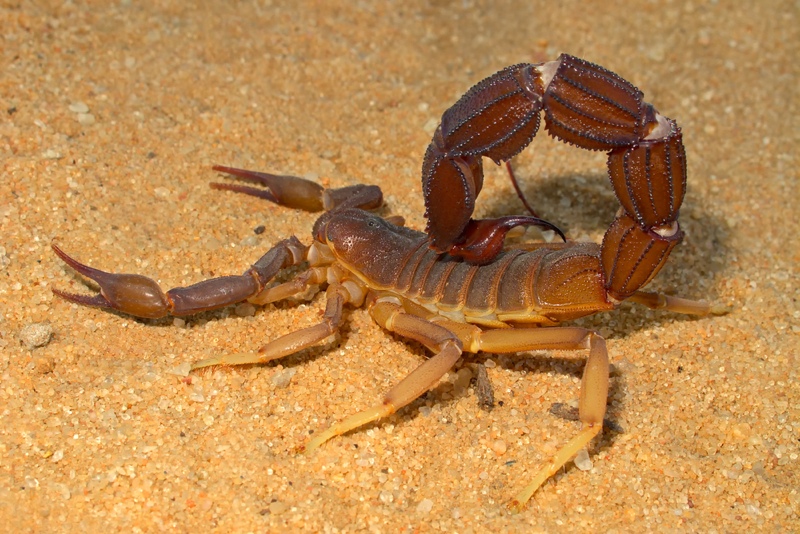Venom-Squirting Scorpions Blind Enemies with Toxin

Some scorpions are able to spray their venom, an ability they use defensively to try to temporarily disable predators, allowing the stinging arachnids to escape the jaws of death, a new study suggests.
From skunks to bombardier beetles, a wide range of animals spray chemicals defensively. But only a relatively few species are known to squirt highly toxic venom when threatened, most notably spitting cobras.
In the 1960s and 1970s, researchers discovered that at least seven species of the Afrotropical scorpion in the genus Parabuthus could also defensively spray venom. At the time, researchers thought this ability was reflexive, something the scorpions did uncontrollably when startled. [Watch the Venom-Spraying Scorpion (Video)]
However, while working as a doctoral student in the lab of zoologist William Hayes at Loma Linda University in California, biologist Zia Nisani thought there might be more to the story — in a series of studies, Nisani had found that scorpion venom is a metabolically expensive commodity, which the arachnids seem to use judiciously.
Nisani and Hayes decided to find out if Parabuthus scorpions had some behavioral control over their venom spraying, predicting the animals would be more likely to spray in high-threat conditions than in low-threat conditions.
The pair ran experiments on adult P. transvaalicus scorpions, simulating these two conditions.
For the low-threat conditions, the researchers simply grabbed the metasomas (tails) of the individual scorpions with tweezers and observed if the animals sprayed venom. Research suggests that animals may assess threats based on multiple cues, with more concurrent predator-associated cues equaling a higher threat level and more pronounced anti-predatory behavior. So in Nisani and Hayes' high-threat conditions, they grabbed the scorpions' metasomas and blew a light puff of air toward the front of the arachnids with a compressed gas duster (akin to the breath of a predator in real-world scenarios). [Gallery: The Amazing Scorpion-Resistant Mouse]
Sign up for the Live Science daily newsletter now
Get the world’s most fascinating discoveries delivered straight to your inbox.
The researchers found the scorpions were more likely to spray venom under high-threat conditions than low-threat conditions — 87.5 percent of the time compared with 12.5 percent of the time. Preliminary observations also showed the scorpions didn't spray when only being blown upon. "As we predicted, [venom spraying] seems to be under behavioral control rather than it being just a reflex," Nisani said.
In a second set of experiments, Nisani and Hayes wanted to find out if the scorpions could direct their venom at the eyes and other sensitive tissues of predators. To do so, the researchers looked at the squirts' velocities, arcs and initial directions, as well as the movements of the scorpions' bodies, metasomas and telsons (end of the tail before the stinger).
The scientists found that the scorpions didn't consistently aim the venom at certain sensitive targets, but the movement of the arachnids' tails increased the width of the venom stream up to 190 degrees, producing a more diffuse spray.
"The way they squirt it gives it a nice arc, covering a wider area and making it more possible to reach a predator's eyes," Nisani said, adding that the venom also becomes airborne and able to irritate the respiratory system, causing sneezing, runny nose and itchy eyes in humans. "When I milked scorpions, I had to wear a mask," Nisani said. "I developed hypersensitivity to" the venom.
The results suggest that when faced with highly threatening predators, such as grasshopper mice and shrews, Parabuthus scorpions squirt venom in a way that creates a diffuse spray that maximizes contact with the eyes and respiratory system of their hunters. This potentially causes temporary blindness, pain and irritation that allows the arachnids to get away.
The study will be published in the June issue of the journal Behavioral Processes.
Follow Joseph Castroon Twitter. Follow us @livescience, Facebook& Google+.Original article on Live Science.










